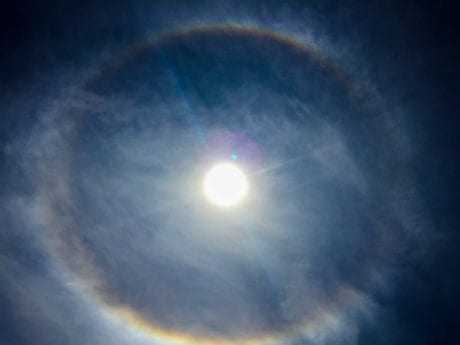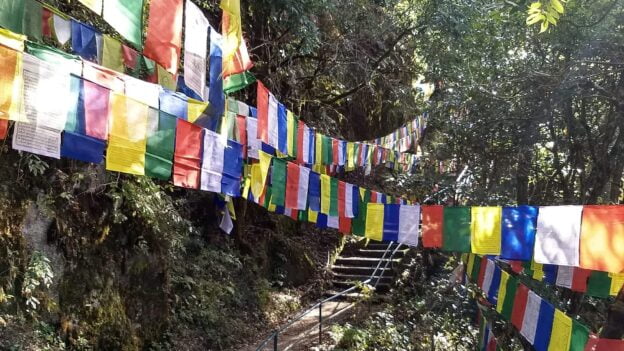About This Course
Mahamudra, as we remember from our previous study, is a Sanskrit term. Many commentators have explained this term, which is often directly translated as “great seal”. You may want to review this discussion of meaning in both Sanskrit and Tibetan here.
In the context of this home practice support program, we can begin by revisiting a quote from one of Phakchok Rinpoche’s recent teachings in which he discusses the very essence of Mahamudra. You may notice that here Rinpoche is not giving a direct translation of the term. Instead, he is explaining how we approach the practice.
Mahā means great mind. Mudrā means all-pervasive. When we are first learning meditation, it is important to know two things. First, the mind is the base of happiness and suffering. Our mind is not reliable as as a source of calmness. It always changes…The most important thing to understand is that when the mind is calm, the mind is happy. When the mind is not calm, the mind is not happy… These differences are very important things for the meditator to know. Not just knowing in the mind (intellectually), but having the experience.
The second thing is the nature of the mind. When you recognize the nature of the mind, it is very peaceful. In that moment of recognition, you are the happiest person. It’s very strange to say that, but that’s how it is… When you recognize nature of mind…that is called seeing or recognizing, or having a short glimpse of Buddha.
We could say that the entire purpose of our dharma practice is to achieve or attain enlightenment for the sake of all sentient beings. Mahamudra is a path to accomplish just that. In the Path of Meditation student pathway, The Path of Meditation Level One home practice support program emphasized developing the calmness of mind that Rinpoche mentions in the above quote as the first important thing to know. This follow-up home support program, the Path of Meditation Level Two focuses on the second important point in Rinpoche’s quote.
Buddhanature
All of these Mahamudra practices, therefore, are geared toward glimpsing the nature of mind’s most fundamental essence, synonymous with Buddhanature, or Tathāgatagarbha (essence of the Thus-gone) or emptiness.
Mahamudra is a systematic approach, a recipe if you will, for how one first begins to glimpse that natural state that is the true nature of mind, and then how to stabilize and continue in that recognition, a recognition from which all good qualities naturally arise. When that recognition of the natural state, the nature of mind, is uncontrived and uninterrupted that is enlightenment.
In a sense then, Buddhanature is both the ground and the fruition of our practice. And our path, in this context the path of Mahamudra, is the practice for recognizing, stabilizing, and then ultimately remaining uninterruptedly in that recognition.
This Path of Meditation Level Two is a home-based practice support program that follows the time-honored tradition of the great Mahamudra masters of the past, which has helped lead countless practitioners to that place, the natural state. In a profound sense then, the journey itself is the goal, Mahamudra.
If one has not already received an introduction to the nature of the mind from a qualified master, this support program will prepare one well to receive it. If one has already received this introduction (often called the “pointing out” instruction), this program will greatly help one to stabilize and gain confidence in that recognition.
Samadhi
True samādhi (see next lesson) in the ultimate sense, is the natural state. This is the innate nature of mind that is introduced to a student by a master when that student is sufficiently “ripe” to receive that instruction. All of the trainings in this program are geared toward glimpsing, clarifying, and stabilizing the realization and recognition of this state.
Where to Start
In the course navigation bar, you will find the entire Path of Meditation Level Two curriculum. Please start with the Before You Begin section. There, you will find explicit instructions on how to best follow this home practice program and how to structure your formal practice sessions. Remember that you have lifetime access to the program, so move along at your own pace and be sure to take the necessary time to reflect and meditate on each unit before proceeding. As Rinpoche often says, you must allow the teachings to touch your heart.
Charts and Diagrams
In a subsequent unit, you will find an updated and revised Path of Meditation Chart. Many of you may have used a previous version of this chart either from the on-line Level One support program or because you received it in person at a retreat. However, we have recently updated this chart to make it more user friendly in response to input from students. We encourage you to print it out or refer to it frequently as it lays out the key elements of the entire Mahamudra path.
In the “How to Follow This Home Practice Support Program” unit, you will see the Course Flow Diagram. It’s designed to be a road map to help you navigate this specific course. This diagram visually illustrates the flow of the course, which units are best studied sequentially and which ones simultaneously. Sounds confusing, we know, but don’t sweat it, all will be clarified in the Before You Begin section.
Again, welcome to the Path of Meditation Level Two!
Course Content
Before You Begin
About Instructor





